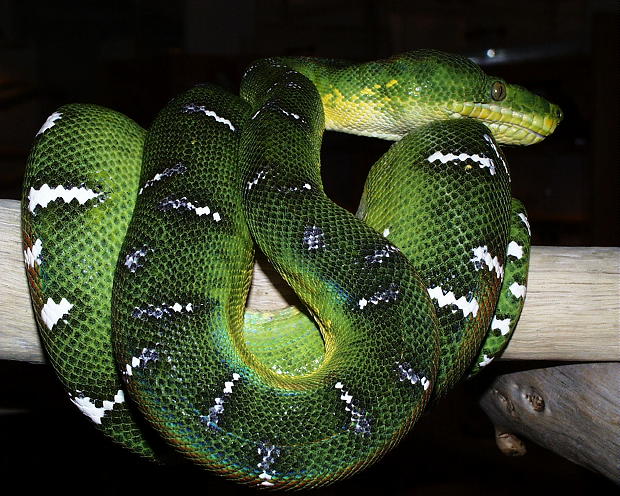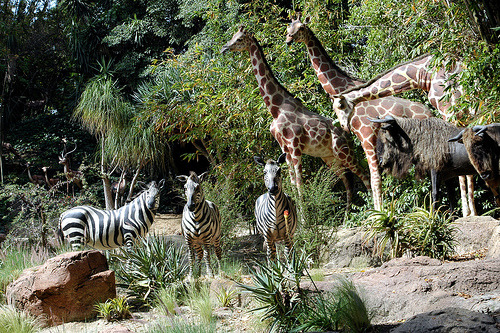Source:- Google.com.pk
Jungle Animal Pictures Biography
Jungle is the densest, most impenetrable region within a tropical rainforest with an abundance of animal and plant life. The word originates from the Sanskrit word jangala (Sanskrit: जंगल), meaning uncultivated land. Although the Sanskrit word refers to dry land, it has been suggested that an Anglo-Indian interpretation led to its connotation as a dense "tangled thicket".[1] while others have argued that a cognate word in Urdu did refer to forests.[2] The term is prevalent in many languages of the Indian subcontinent, and Iranian plateau, particularly in Hindi and Persian.[3]
The term jungle may still be used in technical contexts[citation needed] to describe the rainforest biome, a forest characterised by extensive biodiversity and densely tangled undergrowth including the young trees, vines and lianas, and herbaceous plants.
Contents [hide]
1 Biome
2 As metaphor
3 References
4 External links
[edit]Biome
Jungle on Pulau Tioman, Malaysia
About 6% of the Earth's land mass consists of the ecosystems that could qualify as jungle under the common usage of the word. 57% of all species live in jungle environments.[4] In common usage, forests of northern Thailand or southern Guangdong in China would qualify, but scientifically, these are "monsoon forests" or "tropical deciduous forests" but not "rain forests".[citation needed]
As a forest biome, jungles are present in both equatorial and tropical climatic zones, and are associated with preclimax stages of the rainforest. In another technical context, jungle is distinguished from tropical rainforest in that the former is a profuse thicket of tropical shrubs, vines, and small trees growing in areas outside the light-blocking canopy of a tropical rainforest. Hence, jungles are often found at the edges of climax rain-forests, where human activity may increase sunlight penetration.[citation needed]
[edit]As metaphor
As a metaphor, jungle often refers to situations that are unruly or lawless, or where the only law is perceived to be "survival of the fittest". This reflects the view of "city people" that forests are such places. Upton Sinclair gave the title The Jungle (1906) to his famous book about the life of workers at the Chicago Stockyards portraying the workers as being mercilessly exploited with no legal or other lawful recourse.[5]
The term "The Law of the Jungle" is also used in a similar context, drawn from Rudyard Kipling's The Jungle Book (1894) - though in the society of jungle animals portrayed in that book and obviously meant as a metaphor for human society, that phrase referred to an intricate code of laws which Kipling describes in detail, and not at all to a lawless chaos.








Jungle Animal Pictures Biography
Jungle is the densest, most impenetrable region within a tropical rainforest with an abundance of animal and plant life. The word originates from the Sanskrit word jangala (Sanskrit: जंगल), meaning uncultivated land. Although the Sanskrit word refers to dry land, it has been suggested that an Anglo-Indian interpretation led to its connotation as a dense "tangled thicket".[1] while others have argued that a cognate word in Urdu did refer to forests.[2] The term is prevalent in many languages of the Indian subcontinent, and Iranian plateau, particularly in Hindi and Persian.[3]
The term jungle may still be used in technical contexts[citation needed] to describe the rainforest biome, a forest characterised by extensive biodiversity and densely tangled undergrowth including the young trees, vines and lianas, and herbaceous plants.
Contents [hide]
1 Biome
2 As metaphor
3 References
4 External links
[edit]Biome
Jungle on Pulau Tioman, Malaysia
About 6% of the Earth's land mass consists of the ecosystems that could qualify as jungle under the common usage of the word. 57% of all species live in jungle environments.[4] In common usage, forests of northern Thailand or southern Guangdong in China would qualify, but scientifically, these are "monsoon forests" or "tropical deciduous forests" but not "rain forests".[citation needed]
As a forest biome, jungles are present in both equatorial and tropical climatic zones, and are associated with preclimax stages of the rainforest. In another technical context, jungle is distinguished from tropical rainforest in that the former is a profuse thicket of tropical shrubs, vines, and small trees growing in areas outside the light-blocking canopy of a tropical rainforest. Hence, jungles are often found at the edges of climax rain-forests, where human activity may increase sunlight penetration.[citation needed]
[edit]As metaphor
As a metaphor, jungle often refers to situations that are unruly or lawless, or where the only law is perceived to be "survival of the fittest". This reflects the view of "city people" that forests are such places. Upton Sinclair gave the title The Jungle (1906) to his famous book about the life of workers at the Chicago Stockyards portraying the workers as being mercilessly exploited with no legal or other lawful recourse.[5]
The term "The Law of the Jungle" is also used in a similar context, drawn from Rudyard Kipling's The Jungle Book (1894) - though in the society of jungle animals portrayed in that book and obviously meant as a metaphor for human society, that phrase referred to an intricate code of laws which Kipling describes in detail, and not at all to a lawless chaos.
Jungle Animal Pictures

Jungle Animal Pictures

Jungle Animal Pictures

Jungle Animal Pictures

Jungle Animal Pictures

Jungle Animal Pictures

Jungle Animal Pictures

Jungle Animal Pictures

Jungle Animal Pictures
Rainforest Animals Of The Amazon Jungle - BBC wildlife
Jungle Animals Of Belize Zoo
No comments:
Post a Comment